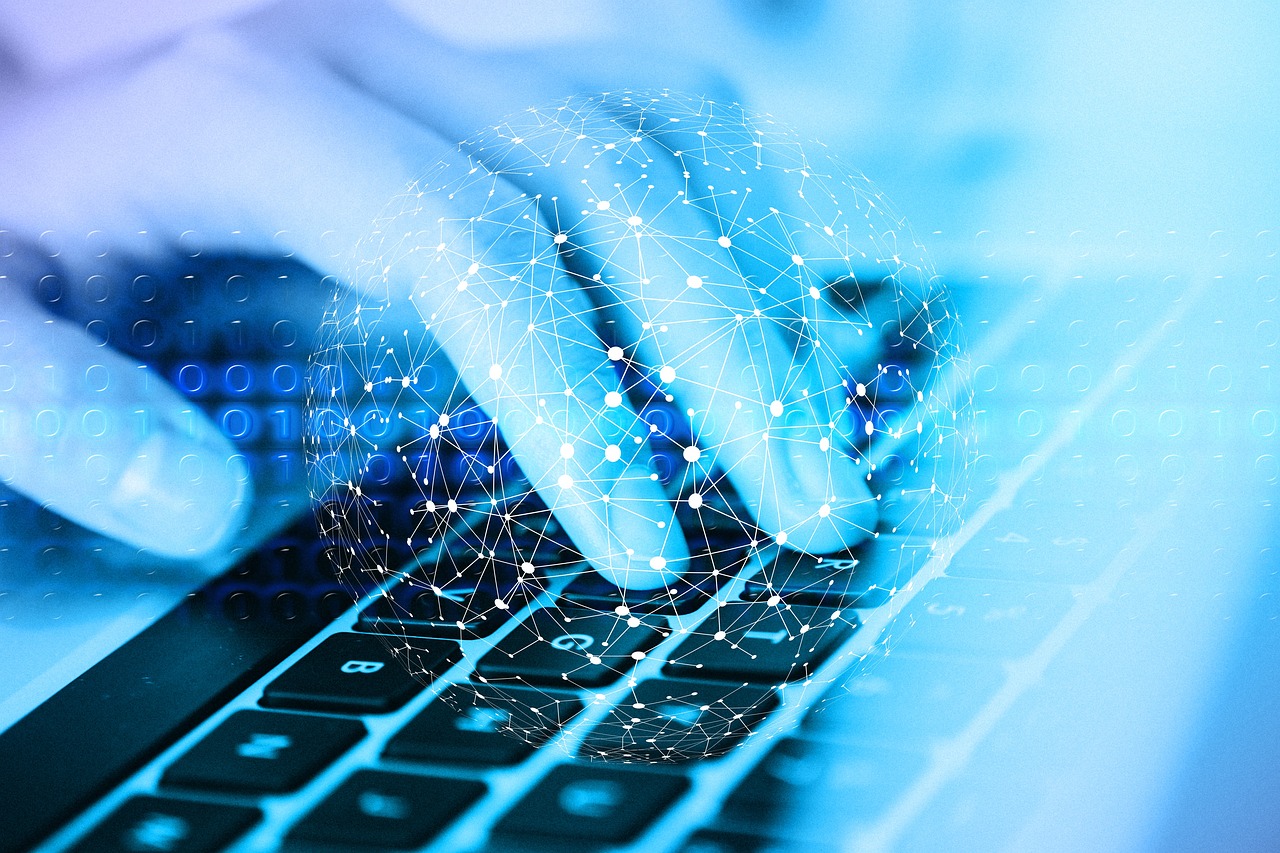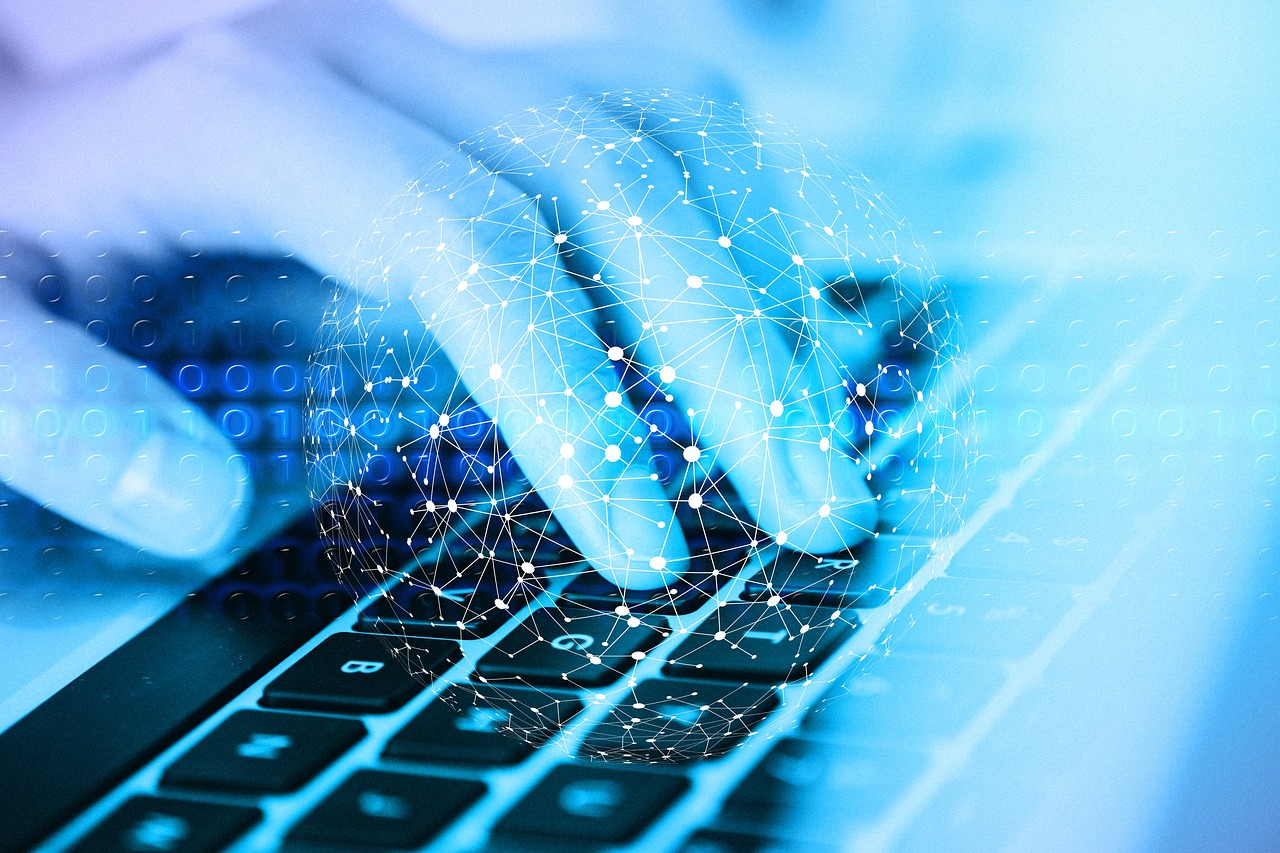The Future of Digital Identity Solutions in Blockchain
In an era where our online presence defines us, the concept of digital identity is more vital than ever. Imagine a world where your identity is not just a username and password but a robust, secure, and self-managed asset that you control entirely. This is where blockchain technology steps in, revolutionizing how we perceive and manage our identities in the digital realm. With its decentralized nature, blockchain offers a new paradigm for digital identity solutions, promising enhanced security, privacy, and user empowerment.
The landscape of digital identity is evolving rapidly, driven by the increasing need for secure online interactions. As cyber threats grow more sophisticated, the importance of a secure digital identity cannot be overstated. Blockchain technology provides a unique solution by creating a tamper-proof environment for identity management. This article will delve into the various aspects of digital identity solutions enabled by blockchain, exploring their benefits, challenges, and future trends that could redefine how we interact online.
One of the most significant advantages of blockchain technology is its ability to enhance security. Traditional identity management systems often rely on centralized databases, making them vulnerable to breaches and unauthorized access. In contrast, blockchain's decentralized nature ensures that identity data is distributed across a network, significantly reducing the risk of data tampering and fraud. Each transaction or identity verification is recorded on an immutable ledger, making it nearly impossible for malicious actors to alter or steal sensitive information.
Moreover, the concept of self-sovereign identity is gaining momentum. This model allows individuals to own and manage their personal information without the need for intermediaries. By leveraging blockchain, users can control who accesses their data and for what purpose, fostering a sense of trust and transparency. This shift not only enhances user experience but also aligns with the core principles of privacy and data ownership that blockchain advocates.
However, while the benefits are clear, the journey toward widespread adoption of blockchain-based identity solutions is not without challenges. One of the primary hurdles is interoperability. For these solutions to be effective, they must seamlessly integrate with existing systems and platforms. As various blockchain networks emerge, ensuring compatibility and communication between them is crucial for creating a unified digital identity ecosystem.
Looking ahead, the future of digital identity solutions is poised for exciting advancements. Innovations in biometric authentication, such as facial recognition and fingerprint scanning, are set to enhance the security and efficiency of identity verification processes. These technologies not only streamline user access but also provide a higher level of security compared to traditional methods.
Additionally, the integration of artificial intelligence (AI) into identity verification processes is expected to further revolutionize the landscape. By analyzing user behavior and patterns, AI can identify anomalies and potential fraud attempts, significantly improving the reliability of digital identity solutions. This synergy between AI and blockchain could lead to more secure and efficient identity management systems, ultimately transforming how we authenticate ourselves online.
In conclusion, the future of digital identity solutions powered by blockchain is bright and full of potential. As we continue to navigate the complexities of the digital age, embracing these innovative technologies will be crucial in enhancing security, privacy, and user control. The journey may be fraught with challenges, but the rewards of a more secure and user-centric digital identity landscape are well worth the effort.
- What is digital identity? Digital identity refers to the online representation of an individual, including personal information, credentials, and digital assets.
- How does blockchain improve digital identity security? Blockchain enhances security by decentralizing data storage, making it less vulnerable to breaches and unauthorized access.
- What are self-sovereign identities? Self-sovereign identities allow individuals to control their personal information without relying on third parties, promoting privacy and data ownership.
- What challenges does blockchain face in digital identity solutions? Interoperability and integration with existing systems are significant challenges that must be addressed for widespread adoption.
- What role does AI play in digital identity verification? AI analyzes user behavior to identify anomalies and reduce fraud, enhancing the reliability of digital identity solutions.

The Importance of Digital Identity
This article explores the evolving landscape of digital identity solutions enabled by blockchain technology, examining their potential benefits, challenges, and future trends in enhancing security and privacy in the digital world.
In today's fast-paced digital environment, digital identity has become the cornerstone of our online interactions. It’s not just a fancy term; it’s the foundation upon which we build our online lives. Whether we’re shopping, banking, or socializing, our digital identities are crucial for establishing trust and ensuring secure transactions. Think of it as your online fingerprint—unique to you and vital for navigating the digital landscape.
Why is understanding digital identity so essential? Well, let’s break it down. Our digital identities serve multiple purposes:
- Access Control: They allow us to access various services and platforms securely.
- Verification: They help in verifying our authenticity to others, ensuring that we are who we say we are.
- Personalization: They enable tailored experiences, making our online interactions more relevant and enjoyable.
However, with great power comes great responsibility. The significance of digital identity emphasizes the need for robust solutions that can protect our information from the ever-growing threats of cybercrime and identity theft. Just like a house needs a solid foundation, our digital lives require secure identity management to thrive.
Moreover, as we move towards a more interconnected world, the implications of digital identity extend beyond individual users. Businesses and organizations rely heavily on secure digital identities for their operations, making it imperative to invest in advanced identity solutions. A breach in digital identity can lead to severe consequences, including financial loss and reputational damage. Therefore, understanding the importance of digital identity is not just beneficial; it’s essential for survival in the digital age.
In summary, digital identity is more than just a concept; it’s a critical element of our online existence. As we delve deeper into the world of blockchain technology and its potential to revolutionize digital identity solutions, we must recognize the importance of establishing secure, reliable, and user-centric identity management systems. The future of digital identity is not just about protecting ourselves; it’s about enhancing our overall digital experience.
Blockchain technology offers unparalleled security features for digital identity solutions. Its decentralized nature ensures data integrity, reduces fraud, and enhances user control, making it a game-changer in identity management.
Decentralization empowers users by allowing them to manage their identities without relying on central authorities. This shift fosters trust and transparency, ultimately enhancing user experience and data ownership.
Self-sovereign identity models enable individuals to own and control their personal information. This approach minimizes reliance on third parties and enhances privacy, aligning with the principles of blockchain technology.
Blockchain's immutable ledger significantly reduces the risk of identity theft. By securely storing identity data, it becomes nearly impossible for unauthorized parties to alter or access sensitive information.
Despite its advantages, blockchain-based identity solutions face interoperability challenges. Ensuring seamless integration across various platforms and systems is essential for widespread adoption and effectiveness.
The future of digital identity solutions will likely involve advancements in biometrics, AI integration, and enhanced user experiences. These trends promise to create more secure and efficient identity verification processes.
Biometric authentication methods, such as facial recognition and fingerprint scanning, are gaining traction in digital identity solutions. These technologies enhance security and streamline user access, making them increasingly popular.
Artificial intelligence is revolutionizing identity verification processes. By analyzing patterns and behaviors, AI can enhance security measures and reduce fraud, improving the reliability of digital identity solutions.
Q: What is digital identity?
A: Digital identity refers to the online representation of an individual, encompassing personal information, credentials, and behaviors that define them in the digital world.
Q: How does blockchain enhance digital identity security?
A: Blockchain enhances security through its decentralized nature, which ensures data integrity and minimizes the risk of unauthorized access and identity theft.
Q: What are self-sovereign identities?
A: Self-sovereign identities allow individuals to own and control their personal information without relying on third parties, enhancing privacy and data security.

How Blockchain Enhances Security
In a world where data breaches and identity theft are becoming alarmingly common, blockchain technology emerges as a beacon of hope for enhancing security in digital identity solutions. Imagine a vault that not only protects your most sensitive information but also allows you to control who can access it. That's the essence of blockchain! Its decentralized architecture fundamentally changes the way we think about identity management, providing a robust solution to the vulnerabilities present in traditional systems.
One of the standout features of blockchain is its decentralization. Unlike conventional identity systems that rely on a single central authority, blockchain distributes data across a network of computers. This means that there’s no single point of failure, making it incredibly difficult for hackers to compromise the system. When your identity data is stored on a blockchain, it is not just locked away; it is encrypted and spread out, ensuring that even if one node is attacked, the rest of the network remains secure.
Decentralization is more than just a buzzword; it empowers users to take back control of their personal information. In traditional systems, we often hand over our data to companies and institutions, trusting that they will keep it safe. However, with blockchain, individuals can manage their own identities without relying on third parties. This shift not only fosters trust but also enhances transparency. Users can see who accesses their information and when, promoting a culture of accountability.
One of the most exciting developments in blockchain identity solutions is the concept of self-sovereign identity (SSI). This model allows individuals to own and control their personal information directly. Instead of storing data on a central server, users maintain their information in a secure digital wallet. This approach minimizes reliance on third parties and enhances privacy, aligning perfectly with the core principles of blockchain technology. It’s like having your own personal bank vault for your identity!
Identity theft is a nightmare that can take years to recover from. Fortunately, blockchain's immutable ledger significantly reduces this risk. Once data is entered into the blockchain, it cannot be altered or deleted without consensus from the network. This characteristic makes it nearly impossible for unauthorized parties to tamper with sensitive information. Imagine if your identity was protected by a fortress—this is what blockchain offers! By securely storing identity data, users can rest assured that their information is safe from prying eyes.
Despite the numerous advantages, blockchain-based identity solutions are not without their challenges. One significant hurdle is interoperability. For blockchain systems to be effective, they need to seamlessly integrate with various platforms and systems. This requires collaboration among different stakeholders, including governments, businesses, and technology providers. Achieving this level of integration is crucial for the widespread adoption of blockchain identity solutions, ensuring that users can access services across multiple platforms without friction.
In conclusion, blockchain technology is revolutionizing the way we secure our digital identities. By harnessing its decentralized nature, self-sovereign identity models, and immutable ledgers, we can create a future where our personal information is not just protected but also under our control. As we navigate the complexities of the digital age, embracing these innovations will be essential in safeguarding our identities against the growing threats of cybercrime.
- What is blockchain technology? - Blockchain is a decentralized digital ledger that securely records transactions across multiple computers.
- How does blockchain enhance security? - By decentralizing data storage, using encryption, and providing an immutable ledger, blockchain significantly reduces the risk of data breaches and identity theft.
- What is self-sovereign identity? - Self-sovereign identity allows individuals to control their personal information without relying on third parties, enhancing privacy and security.
- What are the challenges of blockchain identity solutions? - Interoperability remains a key challenge, as seamless integration with existing systems is necessary for widespread adoption.

Decentralization and User Control
Decentralization is not just a buzzword; it's a **revolution** in how we think about our identities in the digital landscape. Imagine a world where you hold the keys to your own identity, free from the clutches of centralized authorities that often mishandle our data. That's the power of decentralization! It empowers individuals, giving them the ability to manage their personal information without having to rely on banks, governments, or tech giants. In this new paradigm, users can confidently control who accesses their data and when, leading to a much more **trustworthy** and transparent online experience.
With traditional identity systems, users often find themselves at the mercy of third-party organizations that store their data in centralized databases. These databases are frequent targets for cybercriminals, leading to data breaches and identity theft. However, blockchain technology flips this narrative on its head. By utilizing a decentralized network, identity information is distributed across multiple nodes, making it incredibly challenging for hackers to compromise the entire system. This decentralization not only enhances security but also fosters a sense of **ownership** over personal data.
One of the most compelling aspects of decentralization is the **self-sovereign identity** model, which allows individuals to create and manage their identities. This model is based on the principle that individuals should have complete control over their personal information. Instead of relying on a central authority to validate identity, users can authenticate themselves using their own data stored on the blockchain. This approach minimizes the need for intermediaries, reducing costs and potential points of failure. Think of it like having your own personal vault for your identity—secure, accessible, and entirely yours.
Moreover, decentralization promotes **trust** among users and service providers. When individuals know they have control over their data, they are more likely to engage with digital services without fear of exploitation. This trust is further enhanced by the transparency of blockchain technology, where every transaction is recorded on an immutable ledger. Users can see who accessed their data and for what purpose, allowing for a level of accountability that is sorely lacking in traditional systems. The result? A more engaged user base and a healthier digital ecosystem.
In summary, the shift towards decentralization and user control in digital identity solutions is not merely a trend; it represents a fundamental change in how we interact online. As we move forward, it's crucial to embrace this change, ensuring that individuals are empowered to take charge of their identities. The future is bright for those who value privacy, security, and autonomy in the digital world!
- What is decentralization in digital identity?
Decentralization in digital identity refers to the distribution of identity information across a network, allowing individuals to manage their own data without relying on central authorities. - How does blockchain enhance user control?
Blockchain enhances user control by providing a secure, transparent platform where individuals can authenticate their identities and control who accesses their personal information. - What are self-sovereign identity models?
Self-sovereign identity models are frameworks that allow individuals to own and manage their personal data, minimizing reliance on third-party organizations. - Why is decentralization important for privacy?
Decentralization is important for privacy because it reduces the risk of data breaches and identity theft by eliminating central points of failure.

Self-Sovereign Identity Models
In the realm of digital identity, self-sovereign identity (SSI) models are emerging as a revolutionary concept that empowers individuals to have full control over their personal information. Imagine a world where you can carry your identity in your pocket, accessible only to you and shared at your discretion. This is the essence of SSI, where users are not just passive recipients of identity verification but active participants in managing their own data.
At the core of SSI is the principle of data ownership. Traditionally, personal data is stored and controlled by centralized entities, which can lead to vulnerabilities and misuse. However, SSI flips this narrative on its head. With blockchain technology, individuals can create, own, and manage their digital identities without relying on third-party organizations. This not only enhances privacy but also minimizes the risks associated with data breaches.
So, how does this all work? SSI models typically utilize cryptographic techniques to ensure that users can verify their identities without exposing sensitive information. For instance, when you need to prove your age or residency, you can share only the necessary credentials without revealing your entire identity. This selective disclosure is a game-changer, offering a level of privacy that was previously unattainable.
Moreover, SSI models align perfectly with the principles of decentralization and transparency. By eliminating the need for centralized authorities, users can engage in transactions and interactions with greater confidence. Trust is built not on the reputation of a corporation but on the technology itself. This shift not only enhances user experience but also fosters a more secure digital environment.
To further illustrate the benefits of SSI, consider the following:
- Enhanced Privacy: Users have the power to control what information they share and with whom.
- Reduced Reliance on Third Parties: Individuals can verify their identities without needing to go through banks or government agencies.
- Improved Security: The use of blockchain ensures that identity data is immutable and tamper-proof.
As we look toward the future, the adoption of self-sovereign identity models could redefine how we think about personal data and privacy. With the rise of digital interactions, these models not only provide a solution to current challenges but also pave the way for a more secure and user-centric digital landscape.
Q1: What is a self-sovereign identity?
A1: A self-sovereign identity allows individuals to own and control their personal information without relying on centralized authorities.
Q2: How does SSI enhance privacy?
A2: SSI enables users to share only the necessary credentials for verification, protecting sensitive information from exposure.
Q3: What technologies support self-sovereign identity models?
A3: SSI models typically utilize blockchain technology and cryptographic techniques to ensure data security and integrity.

Reducing Identity Theft Risks
In a world where identity theft is becoming alarmingly common, the need for secure digital identity solutions has never been more pressing. Blockchain technology offers a beacon of hope in this turbulent landscape, significantly reducing the risks associated with identity theft. How does it achieve this? The answer lies in its immutable ledger and decentralized nature.
At its core, blockchain operates on a principle of transparency and trust. Each transaction or identity verification is recorded on a public ledger that cannot be altered or deleted. This means that once your identity data is securely stored on the blockchain, it becomes nearly impossible for unauthorized parties to tamper with it. Imagine a digital vault that not only locks away your sensitive information but also ensures that no one can pick the lock.
Moreover, the decentralized nature of blockchain means that there is no single point of failure. Traditional identity systems often rely on central authorities or databases, which can be vulnerable to hacks and data breaches. By distributing the data across a network of computers, blockchain mitigates the risk of mass data theft. In essence, even if one node is compromised, the integrity of the entire system remains intact.
To further illustrate the effectiveness of blockchain in reducing identity theft risks, consider the following table:
| Traditional Identity Systems | Blockchain-Based Identity Solutions |
|---|---|
| Centralized databases vulnerable to hacks | Decentralized storage reducing single points of failure |
| Data can be altered or deleted | Immutable ledger ensures data integrity |
| High risk of mass data breaches | Distributed data reduces risk of large-scale theft |
In addition to these features, blockchain also enhances user control over their personal information. With self-sovereign identity models, individuals can manage who has access to their data and under what circumstances. This empowerment not only fosters trust but also minimizes the chances of identity theft. When users have the ability to control their own information, they become the gatekeepers of their identity.
Furthermore, the use of cryptographic techniques in blockchain adds another layer of security. Each piece of data is encrypted and linked to previous data blocks, creating a chain that is incredibly difficult to break. Think of it as a series of interconnected locks; to access one, you need to unlock them all, making unauthorized access practically impossible.
In conclusion, blockchain technology is revolutionizing how we think about digital identity and security. By significantly reducing the risks of identity theft through its immutable ledger, decentralized nature, and user empowerment, blockchain not only enhances security but also fosters a safer digital environment for everyone. As we move toward a more interconnected world, embracing these innovative solutions will be crucial in protecting our identities.
- What is blockchain technology?
Blockchain is a decentralized digital ledger that records transactions across many computers in a way that the registered transactions cannot be altered retroactively. - How does blockchain reduce identity theft?
Blockchain reduces identity theft by providing an immutable ledger for identity data, decentralizing data storage, and enhancing user control over personal information. - What are self-sovereign identities?
Self-sovereign identities allow individuals to own and control their personal information, reducing reliance on third parties.

Interoperability Challenges
This article explores the evolving landscape of digital identity solutions enabled by blockchain technology, examining their potential benefits, challenges, and future trends in enhancing security and privacy in the digital world.
Digital identity is crucial in today's online interactions, serving as the foundation for secure transactions and access to services. Understanding its significance helps highlight the need for robust solutions in the digital age.
Blockchain technology offers unparalleled security features for digital identity solutions. Its decentralized nature ensures data integrity, reduces fraud, and enhances user control, making it a game-changer in identity management.
Decentralization empowers users by allowing them to manage their identities without relying on central authorities. This shift fosters trust and transparency, ultimately enhancing user experience and data ownership.
Self-sovereign identity models enable individuals to own and control their personal information. This approach minimizes reliance on third parties and enhances privacy, aligning with the principles of blockchain technology.
Blockchain's immutable ledger significantly reduces the risk of identity theft. By securely storing identity data, it becomes nearly impossible for unauthorized parties to alter or access sensitive information.
Despite the promising advantages of blockchain-based identity solutions, they face significant . In a world where multiple platforms and systems exist, ensuring that these diverse technologies can communicate with each other seamlessly is a complex but necessary task. Imagine trying to fit together puzzle pieces from different sets; they may look similar, but they don’t always connect. This is akin to the situation with blockchain identity solutions today.
The lack of standardized protocols can lead to fragmentation, where various identity solutions operate in silos, making it difficult for users to manage their identities across different platforms. For instance, if you have a digital identity on one blockchain, transferring that identity to another can be a daunting challenge without a common framework. This scenario raises a critical question: how can we ensure that users have a fluid experience without compromising security?
To tackle these interoperability challenges, several strategies can be employed:
- Standardization of Protocols: Establishing common standards can facilitate smoother interactions between different systems.
- Collaborative Ecosystems: Encouraging partnerships between various blockchain projects can lead to shared solutions that benefit all.
- API Development: Creating robust APIs can help bridge the gaps between disparate systems, allowing for easier data exchange.
Addressing these interoperability challenges is essential for the widespread adoption of blockchain-based digital identity solutions. Only by ensuring that these systems can work together can we unlock their full potential and provide users with a seamless, secure experience.
The future of digital identity solutions will likely involve advancements in biometrics, AI integration, and enhanced user experiences. These trends promise to create more secure and efficient identity verification processes.
Biometric authentication methods, such as facial recognition and fingerprint scanning, are gaining traction in digital identity solutions. These technologies enhance security and streamline user access, making them increasingly popular.
Artificial intelligence is revolutionizing identity verification processes. By analyzing patterns and behaviors, AI can enhance security measures and reduce fraud, improving the reliability of digital identity solutions.
- What is digital identity?
Digital identity refers to the online representation of an individual, encompassing personal information, credentials, and attributes that are used to verify their identity in digital interactions. - How does blockchain improve digital identity security?
Blockchain enhances security through its decentralized and immutable nature, which protects identity data from unauthorized access and alterations. - What are the main challenges facing blockchain identity solutions?
The primary challenges include interoperability between different systems, lack of standardized protocols, and ensuring user privacy while maintaining security. - What role does AI play in digital identity solutions?
AI improves identity verification by analyzing user behavior and patterns, thus enhancing security and reducing the risk of fraud.

Future Trends in Digital Identity
The future of digital identity solutions is not just a fleeting concept; it’s evolving rapidly, driven by technological advancements and the ever-growing need for security and privacy. As we look ahead, several key trends are shaping the landscape of digital identity, making it more robust and user-friendly than ever before. One of the most significant trends is the integration of biometric authentication methods. Imagine a world where your face or fingerprint becomes your password—this is not science fiction; it’s becoming a reality. Biometric technologies are gaining traction because they offer a level of security that traditional passwords simply cannot match.
Additionally, the role of artificial intelligence (AI) in digital identity verification is set to expand exponentially. AI algorithms are capable of analyzing vast amounts of data to recognize patterns and behaviors, enhancing security measures while simultaneously reducing fraud. This means that digital identity solutions will not only be more secure but also more efficient in verifying who you are. The synergy between AI and blockchain technology promises to create a seamless experience for users, where identity verification is as smooth as a swipe on your smartphone.
Moreover, as we delve deeper into the future, the concept of self-sovereign identity (SSI) is gaining momentum. SSI empowers individuals to take control of their personal information, allowing them to share only what is necessary, when it is necessary. This paradigm shift minimizes reliance on third-party entities and aligns perfectly with the principles of decentralization that blockchain technology champions. Imagine having the power to manage your identity without the fear of it being misused by corporations or governments—this is the essence of self-sovereign identity.
However, it’s not all smooth sailing; the journey towards a fully integrated digital identity ecosystem faces interoperability challenges. Different platforms and systems often operate in silos, making it difficult to achieve a seamless user experience. To address this, stakeholders must collaborate to establish common standards that facilitate interoperability. This is crucial for the widespread adoption of blockchain-based identity solutions, as users will expect their digital identities to work effortlessly across various services and platforms.
In summary, the future trends in digital identity are poised to revolutionize how we interact online. With advancements in biometric authentication, AI integration, and self-sovereign identity models, we are heading towards a more secure and user-centric digital landscape. However, addressing interoperability challenges will be key to unlocking the full potential of these innovations. The future is bright, and as technology continues to advance, so too will our approaches to managing digital identity.
- What is digital identity?
Digital identity refers to the online representation of an individual, including personal information, credentials, and online behavior. - How does blockchain enhance digital identity security?
Blockchain provides a decentralized, immutable ledger that ensures data integrity and reduces the risk of identity theft. - What are self-sovereign identities?
Self-sovereign identities allow individuals to control their personal data without relying on third-party authorities. - What role does AI play in digital identity?
AI enhances identity verification processes by analyzing patterns and behaviors, improving security and reducing fraud. - What are the challenges of implementing digital identity solutions?
Interoperability challenges and the need for common standards across platforms are significant hurdles to widespread adoption.

Biometric Authentication
In the ever-evolving landscape of digital identity solutions, stands out as one of the most promising advancements. Imagine a world where you can unlock your devices, access sensitive accounts, and verify your identity with just a glance or a touch. This technology leverages unique biological traits, such as fingerprints, facial features, and even iris patterns, to establish a person's identity. Not only does this method enhance security, but it also provides a seamless user experience that traditional password systems simply cannot match.
As we delve deeper into the realm of biometric authentication, it's essential to recognize its numerous benefits. For starters, biometric data is inherently unique to each individual, making it incredibly difficult for impostors to replicate. This level of security is crucial in a time when identity theft and online fraud are rampant. Additionally, biometric systems often come with built-in convenience; users no longer need to remember complex passwords or carry physical tokens. Instead, they can authenticate themselves quickly and efficiently, which is particularly valuable in fast-paced environments.
However, the implementation of biometric authentication is not without its challenges. Privacy concerns loom large as individuals become increasingly aware of how their biometric data is collected and stored. The idea of having one's fingerprint or facial data stored in a database can be unsettling, leading to questions about who has access to this sensitive information and how it is protected. To address these concerns, organizations must prioritize robust security measures and transparency in their data handling practices.
Moreover, the technology behind biometric authentication is continuously advancing. For instance, machine learning algorithms are being integrated to improve accuracy and reduce false positives. This means that as the technology matures, it will become even more reliable, ensuring that legitimate users can access their accounts while keeping unauthorized individuals at bay.
In conclusion, biometric authentication represents a significant leap forward in digital identity verification. By combining enhanced security with user-friendly access methods, it addresses many of the shortcomings of traditional systems. However, as we embrace this technology, it is crucial to remain vigilant about privacy and security concerns, ensuring that the benefits of biometric authentication are realized without compromising individual rights.
- What is biometric authentication? Biometric authentication is a security process that uses unique biological characteristics, such as fingerprints or facial recognition, to verify an individual's identity.
- How secure is biometric authentication? It is generally considered more secure than traditional password systems due to the uniqueness of biometric data. However, it is essential to implement robust security measures to protect this sensitive information.
- What are the privacy concerns associated with biometric data? Privacy concerns include how biometric data is collected, stored, and accessed. Users should be informed about data handling practices to ensure their information is protected.
- Can biometric authentication be bypassed? While it is difficult to replicate biometric data, no system is entirely foolproof. Continuous advancements in technology aim to address these vulnerabilities.

AI and Identity Verification
In the rapidly evolving landscape of digital identity solutions, artificial intelligence (AI) is playing a pivotal role in transforming how we verify identities. Traditional methods of identity verification often rely on static information such as passwords or identification documents, which can be easily compromised. However, AI introduces a dynamic approach that enhances security and reduces the risk of fraud.
By leveraging advanced algorithms, AI can analyze vast amounts of data to identify patterns and behaviors associated with legitimate users. This capability not only streamlines the verification process but also provides a more robust defense against identity theft. For instance, AI can assess factors such as user behavior, device information, and even location to create a comprehensive profile of an individual's identity.
Imagine walking into a bank where the system recognizes you not just by your face but also by your unique behavioral patterns. This is the power of AI in identity verification. It goes beyond simple recognition; it creates a multi-layered security framework that adapts to the user's habits, making it significantly harder for fraudsters to impersonate someone.
Moreover, AI can facilitate real-time verification. For example, during an online transaction, AI can instantly analyze the user's history and behavior to determine if the transaction is legitimate. If something seems off—like a sudden change in location or an unusual spending pattern—the system can trigger additional security measures, such as multi-factor authentication or a temporary hold on the transaction.
As we look towards the future, the integration of AI in identity verification will likely lead to the development of more sophisticated systems. These systems will not only enhance security but also improve user experience. AI can help reduce friction in the verification process, allowing for quicker access to services without compromising safety.
However, while the benefits of AI in identity verification are clear, there are also challenges that need to be addressed. Issues such as data privacy, algorithmic bias, and the need for transparency in AI decision-making processes are crucial factors that stakeholders must consider. As we embrace this technology, it’s essential to ensure that it is used ethically and responsibly.
In conclusion, AI is set to revolutionize the way we approach identity verification. By making systems smarter and more responsive, AI not only enhances security but also fosters a more seamless user experience. As we continue to innovate and adapt, the future of digital identity solutions looks promising, with AI at the forefront of this transformation.
- What is AI in identity verification? AI in identity verification refers to the use of artificial intelligence technologies to analyze user data and behaviors to confirm identities securely.
- How does AI enhance security in identity verification? AI enhances security by detecting anomalies and patterns in user behavior, allowing for real-time assessments that can prevent fraud.
- Are there any risks associated with AI in identity verification? Yes, risks include data privacy concerns, potential bias in algorithms, and the need for transparency in AI decision processes.
- What future trends can we expect in AI and identity verification? Future trends may include more advanced biometric systems, improved machine learning algorithms, and greater integration of AI with other security measures.
Frequently Asked Questions
- What is digital identity, and why is it important?
Digital identity refers to the online representation of an individual, encompassing personal information, credentials, and online behavior. It's crucial because it serves as the foundation for secure transactions, access to services, and overall online interactions. In a world where everything is becoming digital, having a robust digital identity is essential for ensuring security and privacy.
- How does blockchain enhance the security of digital identities?
Blockchain technology enhances security through its decentralized nature, which ensures data integrity and reduces fraud. By distributing data across a network of computers, it becomes nearly impossible for unauthorized parties to alter or access sensitive information. This level of security empowers users to have greater control over their identities.
- What are self-sovereign identity models?
Self-sovereign identity models allow individuals to own and control their personal information without relying on third-party services. This aligns with the principles of blockchain technology, promoting privacy and minimizing the risks associated with data breaches. Essentially, you become the gatekeeper of your own identity.
- What challenges do blockchain-based identity solutions face?
One of the main challenges is interoperability. For blockchain identity solutions to be effective, they must seamlessly integrate with various platforms and systems. Without this integration, widespread adoption and functionality could be hindered, limiting the potential benefits of these innovative solutions.
- What future trends can we expect in digital identity solutions?
The future is bright for digital identity solutions, with trends such as biometric authentication and AI integration leading the way. Biometric methods like facial recognition and fingerprint scanning are becoming popular for their enhanced security and user convenience. Meanwhile, AI is revolutionizing identity verification by analyzing patterns and behaviors to improve reliability and reduce fraud.
- How does biometric authentication work in digital identity?
Biometric authentication uses unique physical characteristics, such as fingerprints or facial features, to verify an individual's identity. This method enhances security by making it much harder for unauthorized users to gain access. It's like having a key that only you possess, ensuring that your digital identity remains secure.
- Can AI improve the reliability of digital identity solutions?
Absolutely! AI can analyze vast amounts of data to identify patterns and behaviors, which helps in enhancing security measures. By detecting anomalies or potential fraud, AI significantly improves the reliability of digital identity solutions, making online interactions safer for everyone.



















